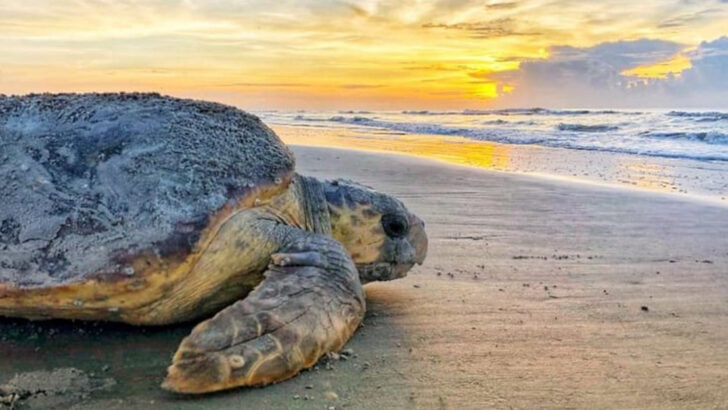The beach isn’t just for sunbathers and surfers—it’s teeming with wild, watchful eyes. Beneath the crashing waves and scattered seashells, creatures of all shapes and sizes are going about their day. Some scuttle across the sand like tiny acrobats. Others float just offshore, blending in with the tide until the perfect moment. These 16 coastal animals are not only stunning—they’re surprisingly easy to spot if you know where (and when) to look. They’ve adapted to share their sandy homes with beachgoers, making your summer trip a front-row seat to nature’s hidden performance. Whether you’re walking the shoreline, wading in tide pools, or simply watching the water, these creatures bring coastal adventures to life. So grab your towel—and your curiosity. The ocean has company waiting.
Ghost Crab
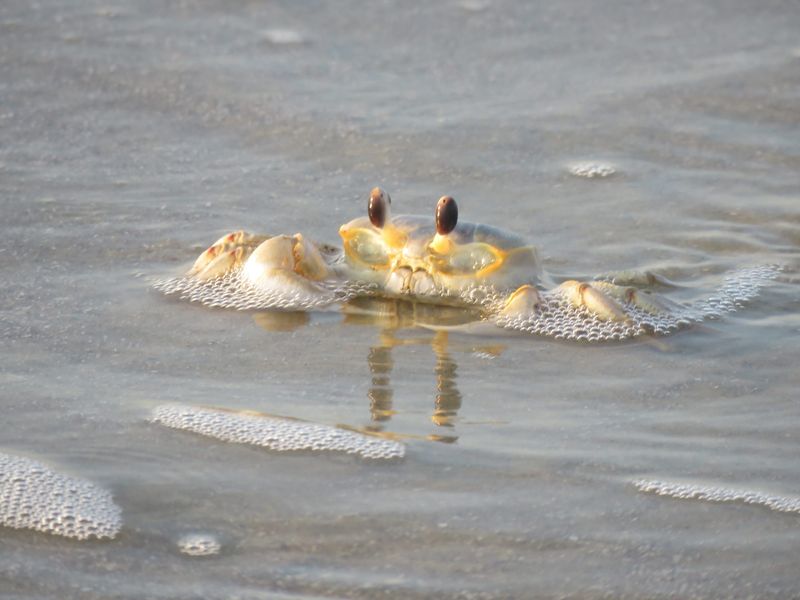
Ghost crabs are the masters of disguise, blending seamlessly with the sandy shores. These small crustaceans are known for their pale, sandy coloration, which helps them hide from predators. With their swift movements and distinctive stalked eyes, they scurry along the beach, often digging burrows near the waterline. Observing a ghost crab can be a delightful challenge, as their quick movements make them elusive. Did you know? Ghost crabs can run up to 10 miles per hour, making them one of the fastest creatures on the beach. Spotting one is a rewarding experience for keen-eyed beachgoers.
Atlantic Bottlenose Dolphin
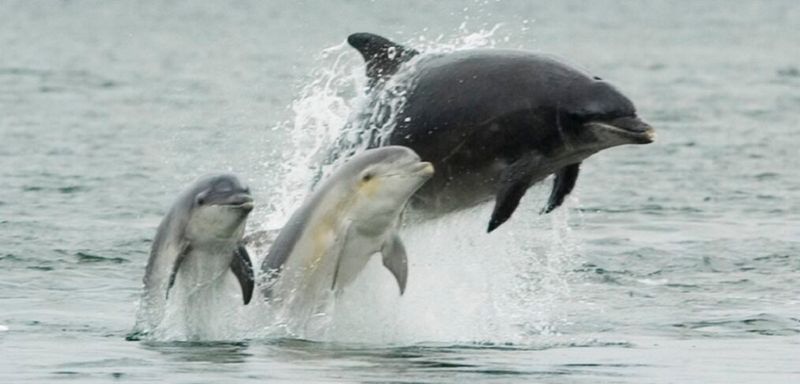
Atlantic bottlenose dolphins are the acrobats of the sea, often found frolicking in coastal waters. Their playful nature and intelligence make them a favorite among beach visitors. These dolphins use echolocation to navigate and hunt, creating a symphony of clicks and whistles. Swimming in pods, they work together to catch fish, showcasing incredible teamwork. A fascinating fact: dolphins have been observed using tools, such as sea sponges, to protect their snouts while foraging. Watching a pod of dolphins leap and play in the surf is a magical sight that leaves a lasting impression.
Loggerhead Sea Turtle
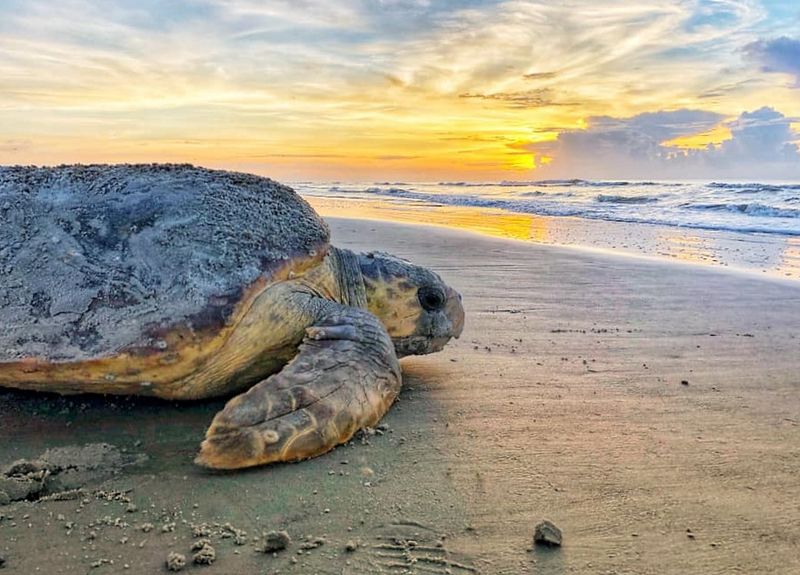
The loggerhead sea turtle, with its large head and powerful shell, commands attention as it traverses the beach. These majestic reptiles are frequent visitors during nesting season, digging deep holes to lay their eggs. Conservation efforts have been crucial in protecting their nesting sites, ensuring future generations of loggerheads. A heartwarming sight is watching hatchlings emerge and make their perilous journey to the sea. Did you know? Loggerheads can live up to 50 years and travel thousands of miles across the ocean. Their annual pilgrimage to the beach is a testament to nature’s cycles.
Brown Pelican
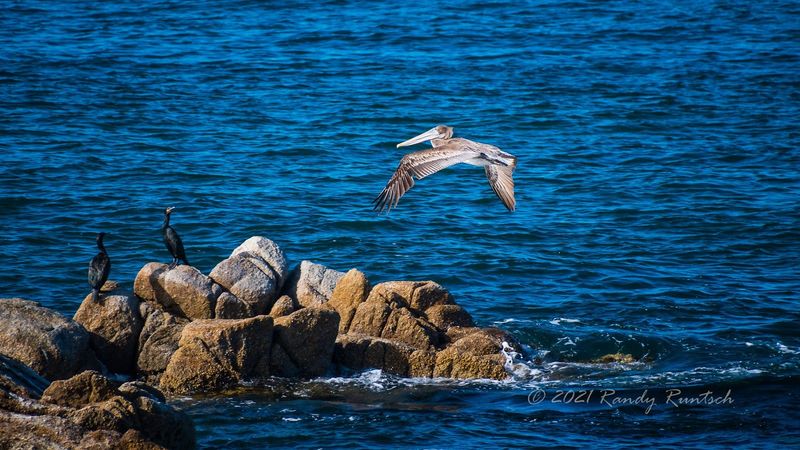
With a wingspan reaching up to 7 feet, the brown pelican is an impressive sight along coastal waters. These birds are skilled hunters, diving from heights to catch fish with precision. Their large bill and expandable throat pouch make them highly efficient at capturing prey. Pelicans often travel in flocks, skimming the waves in mesmerizing formations. Despite their graceful appearance, they faced threats from chemical pollutants in the past. Conservation measures have led to a remarkable recovery. Watching a brown pelican soar and dive showcases the beauty and resilience of coastal wildlife.
Common Sandpiper
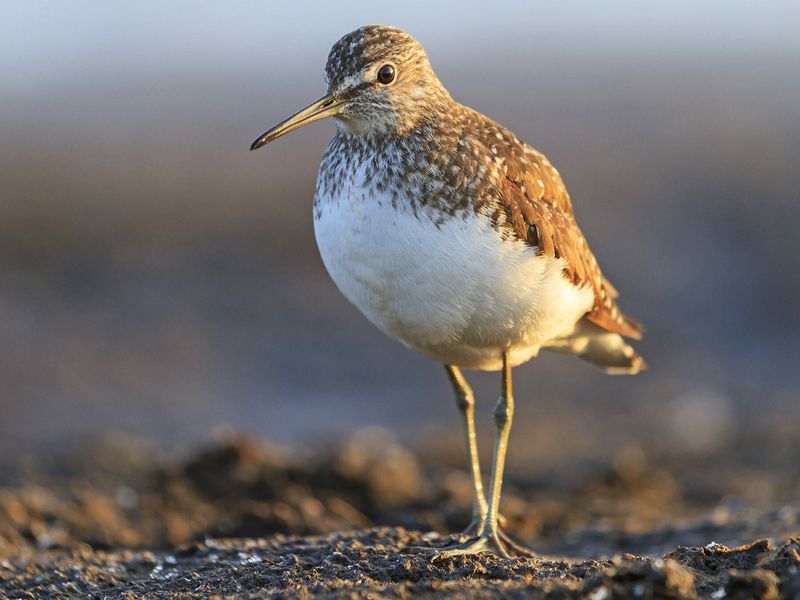
The common sandpiper, with its characteristic bobbing motion, is a bird that frequents sandy shores and estuaries. These small, brown birds are constantly on the move, searching for insects and crustaceans hidden beneath the sand. Often seen alone or in pairs, sandpipers have a distinctive flight pattern with rapid wingbeats followed by glides. An interesting fact: their bobbing motion is believed to be a form of communication or a way to flush out prey. Observing these tireless foragers offers insight into the intricate behaviors of coastal avian life.
Portuguese Man o’ War
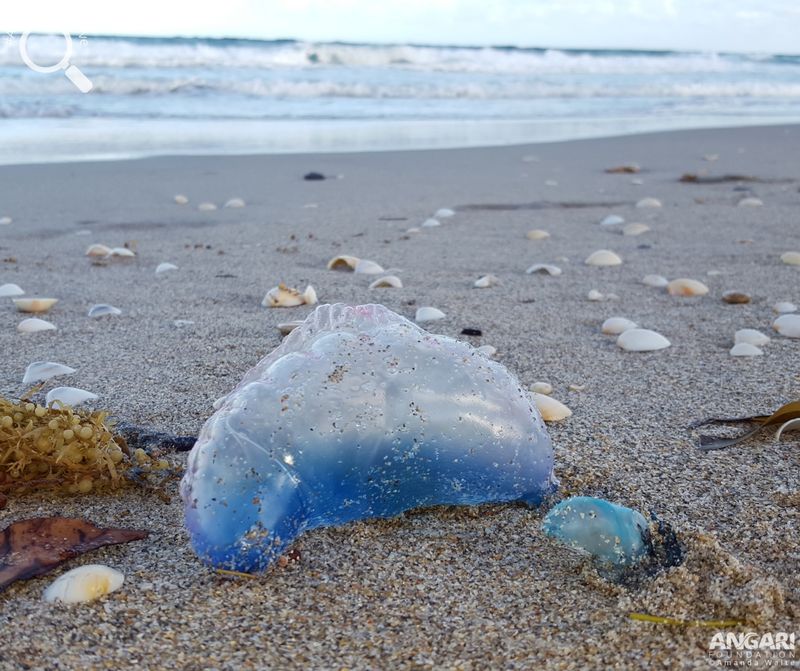
The Portuguese Man o’ War is a fascinating yet dangerous inhabitant of the beach. Not a true jellyfish, this colonial organism consists of multiple polyps working together. Its gas-filled bladder allows it to float, while trailing tentacles deliver painful stings to unsuspecting swimmers. Despite their threat, their translucent beauty is captivating, with shades of blue and pink shimmering in the sunlight. Fun fact: sea turtles are known to feed on them despite their venomous tentacles. Spotting a Man o’ War requires caution but adds an element of excitement to beachcombing.
Sand Dollar
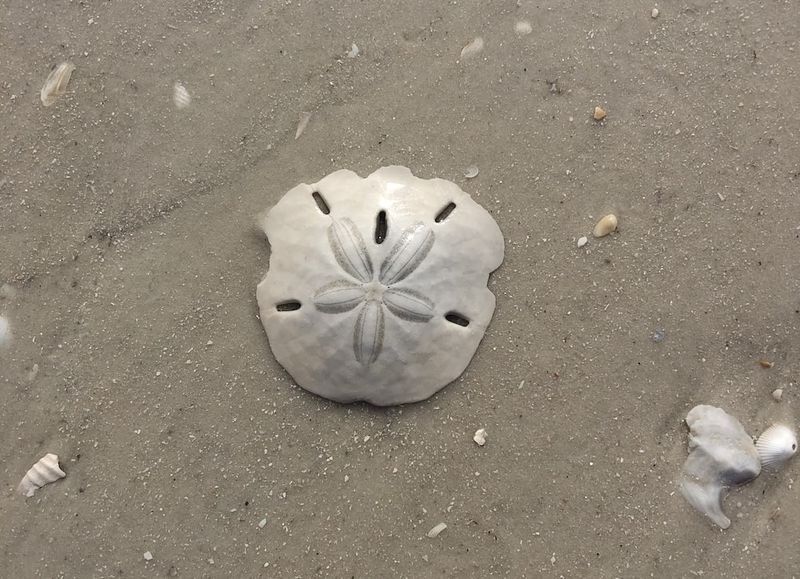
Sand dollars, with their delicate, star-shaped imprints, are often found washed ashore, resembling sun-bleached coins. These echinoderms are related to sea urchins and share the same family. Living sand dollars have tiny spines covering their bodies, aiding in movement and feeding. Their unique star pattern is actually part of their internal structure known as petaloids. An interesting tidbit: in some cultures, sand dollars symbolize peace and goodwill. Beachcombers often collect these fragile treasures as keepsakes, marveling at their intricate designs and the mysteries of marine life they represent.
Hermit Crab
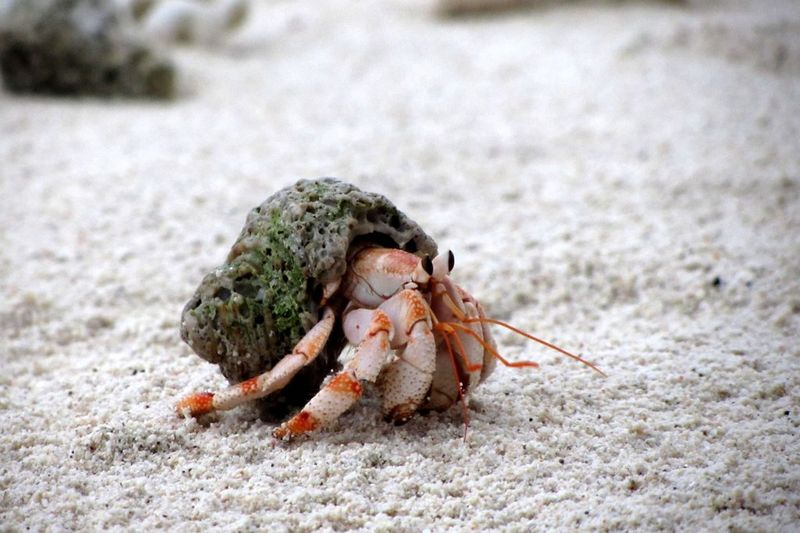
Hermit crabs are the nomads of the beach, constantly on the move in search of new shells. Unlike true crabs, they have a soft abdomen and rely on abandoned shells for protection. As they grow, they must find larger shells, leading to fascinating ‘housing markets’ where crabs compete and negotiate for the best homes. Hermit crabs are social creatures, often found in clusters around tide pools. Did you know? Some species use sea anemones as bodyguards, attaching them to their shells for added defense. Their resourcefulness and adaptability make them a delight to observe.
Great Blue Heron
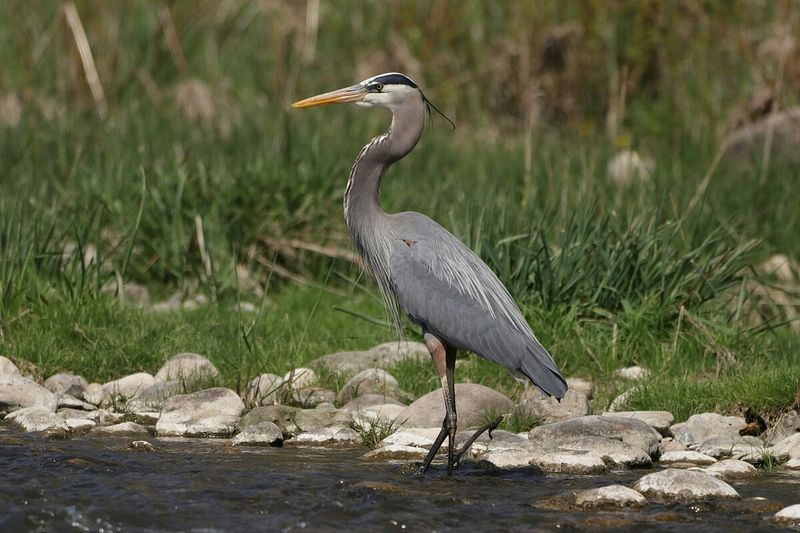
The great blue heron, with its stately demeanor and striking plumage, graces the coastline with elegance. These birds are patient hunters, standing still for long periods before striking at fish with precision. Their long legs and neck allow them to wade through deeper waters, a testament to their adaptability. With a wingspan that can reach 6 feet, watching a heron take flight is a majestic experience. Interesting fact: despite their size, herons are light enough to perch on trees. Their presence adds grace to the coastal landscape, embodying the tranquility of nature.
Fiddler Crab
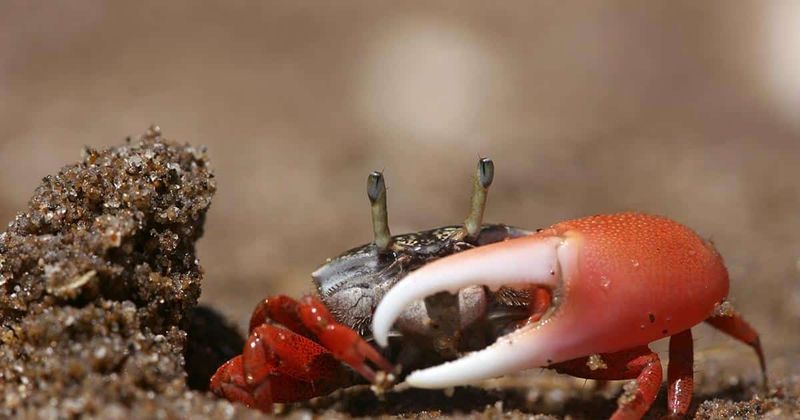
Fiddler crabs are known for their comically oversized claws, which they use for communication and mating displays. These small crabs are often seen on muddy beaches and mangroves, where they dig burrows and search for food. Male fiddler crabs wave their distinctive claws to attract females and ward off rivals. Their social interactions and vibrant colors make them a lively addition to the coastal ecosystem. A quirky fact: the name ‘fiddler’ comes from the motion of their smaller claw, which resembles playing a fiddle. Observing their antics offers amusement and insight into crab behavior.
Sea Otter
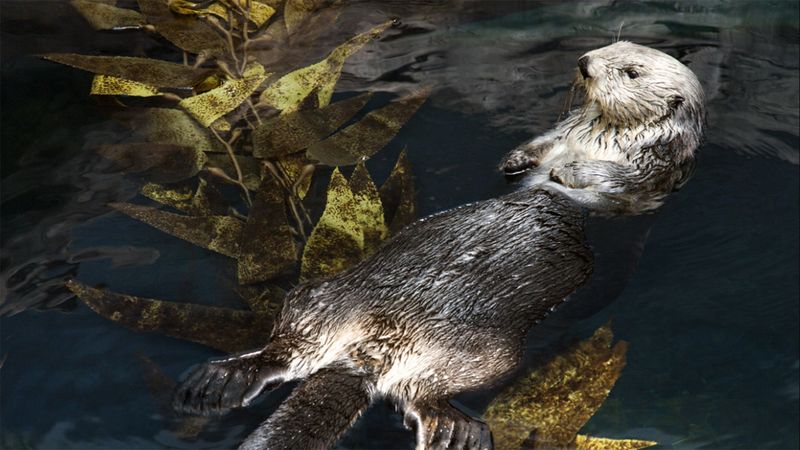
Sea otters are charismatic residents of the coastal kelp forests, known for their playful behavior and tool use. Floating on their backs, they crack open shellfish with rocks, showcasing their intelligence. Otters play a crucial role in maintaining the health of kelp ecosystems by controlling sea urchin populations. Their dense fur is the thickest of any animal, keeping them warm in cold waters. A fun tidbit: sea otters hold hands while sleeping to stay together. Their endearing antics and importance in the ecosystem make them a beloved symbol of the coastal wilderness.
Royal Tern
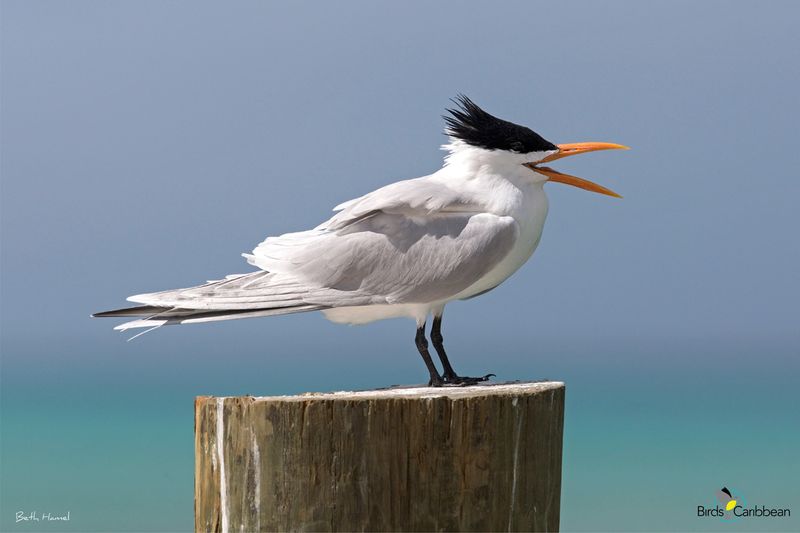
The royal tern, with its distinctive black cap and vibrant orange bill, stands out among the shorebirds. These elegant birds are often found in large colonies, nesting on sandy islands. They are agile hunters, diving into the water to catch fish with remarkable accuracy. Terns communicate with a variety of calls, creating a lively atmosphere on the beach. A fascinating fact about these birds is their courtship ritual, where males present fish to females. The royal tern’s striking appearance and dynamic behavior make it a captivating sight for beach visitors.
Horseshoe Crab
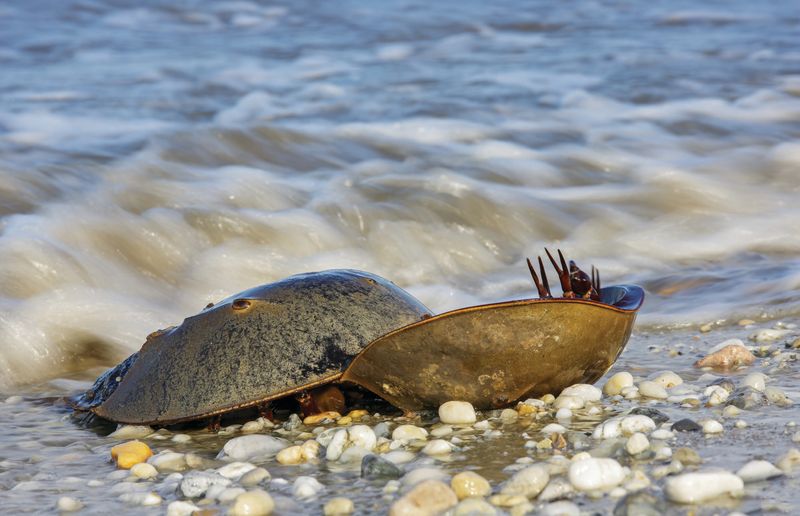
Horseshoe crabs are living fossils, having existed for over 450 million years. Their distinctive, helmet-like shells and long tails make them easily recognizable. Despite their intimidating appearance, they are harmless creatures. Horseshoe crabs play a vital role in the ecosystem, with their blue blood used in medical research for detecting bacterial contamination. During spawning season, they congregate in large numbers, laying thousands of eggs. An interesting fact: horseshoe crabs have ten eyes, aiding in navigation and detecting predators. Their ancient lineage and ecological importance highlight the wonders of the natural world.
Atlantic Puffin
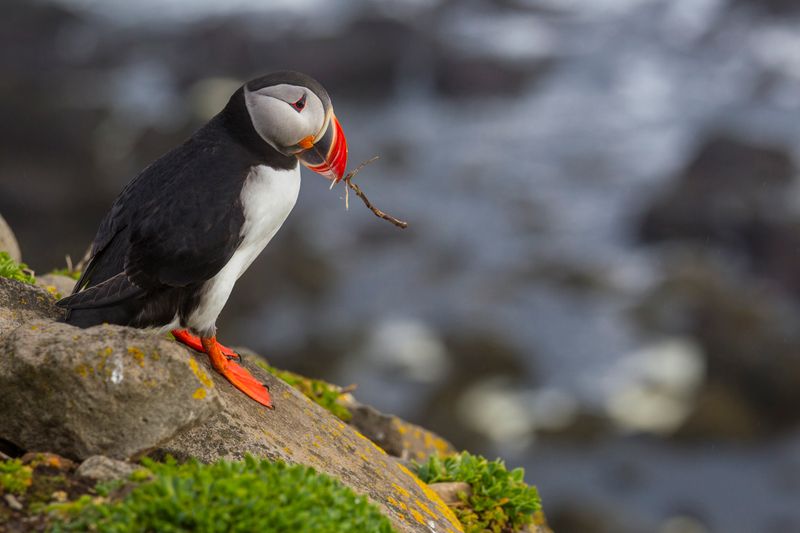
Atlantic puffins, with their vibrant beaks and distinctive appearance, are often nicknamed ‘sea parrots.’ These birds are expert divers, using their wings to ‘fly’ underwater while hunting fish. Puffins nest in burrows on coastal cliffs, forming large colonies that create a bustling environment during breeding season. Despite their awkwardness on land, they are graceful in the air and sea. A fun fact: puffins can flap their wings up to 400 times per minute. Observing these charming birds offers a glimpse into the vibrant life of coastal bird colonies.
Blue Mussel
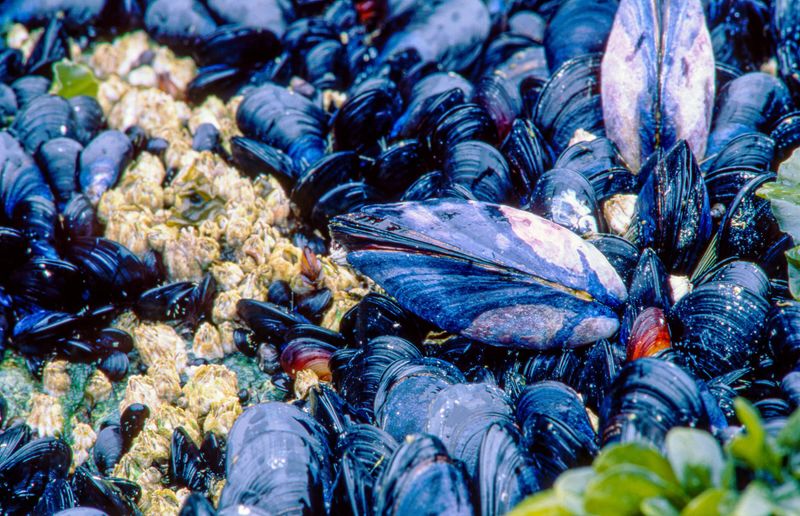
Blue mussels, with their glossy shells and deep blue hue, are common inhabitants of the intertidal zone. They attach to rocks using strong threads called byssal threads, forming dense clusters. These bivalves filter plankton from the water, playing a crucial role in the coastal food web. Mussels are a popular seafood, known for their tender meat and nutritional value. Did you know? Their shells are composed of calcite and aragonite, providing strength and durability. The presence of blue mussels indicates a healthy marine environment, making them an indicator species for ecosystem health.
American Oystercatcher
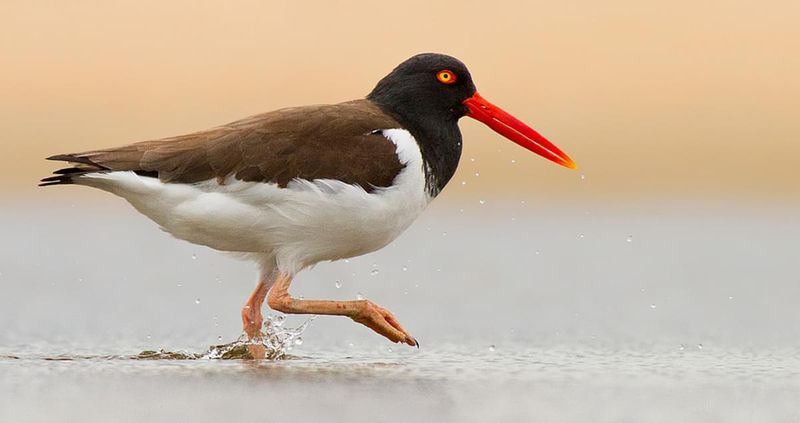
American oystercatchers are striking birds, easily recognized by their bright red bills and bold black-and-white plumage. They inhabit coastal areas, using their strong bills to pry open shellfish. These birds are often seen patrolling the shorelines, their loud calls echoing across the beach. Oystercatchers are monogamous, forming strong pair bonds and defending their nesting territories. An interesting tidbit: they have specialized eyes that help them locate prey in tidal zones. Observing an oystercatcher at work reveals the intricate balance of life along the coast, highlighting the rich biodiversity of these environments.

